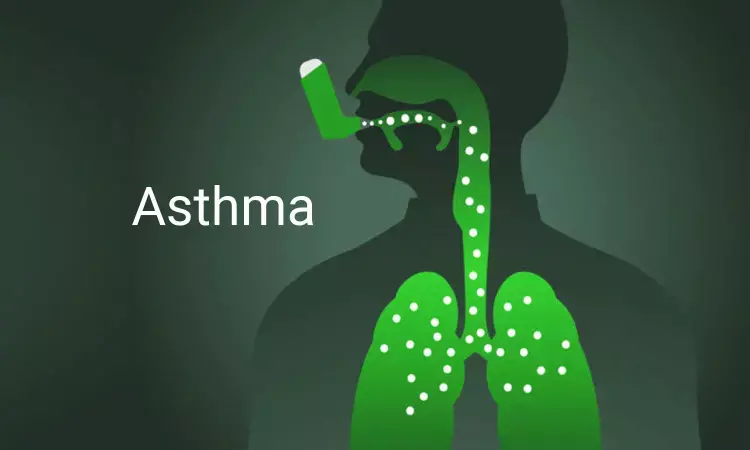- Home
- Medical news & Guidelines
- Anesthesiology
- Cardiology and CTVS
- Critical Care
- Dentistry
- Dermatology
- Diabetes and Endocrinology
- ENT
- Gastroenterology
- Medicine
- Nephrology
- Neurology
- Obstretics-Gynaecology
- Oncology
- Ophthalmology
- Orthopaedics
- Pediatrics-Neonatology
- Psychiatry
- Pulmonology
- Radiology
- Surgery
- Urology
- Laboratory Medicine
- Diet
- Nursing
- Paramedical
- Physiotherapy
- Health news
- Fact Check
- Bone Health Fact Check
- Brain Health Fact Check
- Cancer Related Fact Check
- Child Care Fact Check
- Dental and oral health fact check
- Diabetes and metabolic health fact check
- Diet and Nutrition Fact Check
- Eye and ENT Care Fact Check
- Fitness fact check
- Gut health fact check
- Heart health fact check
- Kidney health fact check
- Medical education fact check
- Men's health fact check
- Respiratory fact check
- Skin and hair care fact check
- Vaccine and Immunization fact check
- Women's health fact check
- AYUSH
- State News
- Andaman and Nicobar Islands
- Andhra Pradesh
- Arunachal Pradesh
- Assam
- Bihar
- Chandigarh
- Chattisgarh
- Dadra and Nagar Haveli
- Daman and Diu
- Delhi
- Goa
- Gujarat
- Haryana
- Himachal Pradesh
- Jammu & Kashmir
- Jharkhand
- Karnataka
- Kerala
- Ladakh
- Lakshadweep
- Madhya Pradesh
- Maharashtra
- Manipur
- Meghalaya
- Mizoram
- Nagaland
- Odisha
- Puducherry
- Punjab
- Rajasthan
- Sikkim
- Tamil Nadu
- Telangana
- Tripura
- Uttar Pradesh
- Uttrakhand
- West Bengal
- Medical Education
- Industry
Omalizumab shows efficacy in asthmatics in the long run: claims study

According to a recent research, Omalizumab therapy has proven to be very effective, with this efficacy sustained after 4 years of treatment. Researchers further explained that the success of the therapy can be predicted from the baseline FEV1% and clinical improvement (based on ACQ-7 and mini AQLQ scores) at week 16.the findings have been published in Journal of Asthma and Allergy.
Biological therapy is currently the treatment of choice for severe asthma, whereas the administration of OCS as the maintenance treatment should be avoided. Biological treatment targets two Th-2 high asthma phenotypes: allergic asthma and eosinophilic asthma. Allergic asthma appears to be the most common asthma phenotype.5 It accounts for approximately 40% of cases in adults and over 70% of cases in children.6 It is characterized by the presence of specific IgE and increased total IgE (tIgE) levels, which play a crucial role in the pathogenesis of the disease.7 For this reason, IgE-mediated immunologic pathways represent an attractive target for therapeutic agents. To date, the only drug known to reduce IgE levels developed for the treatment of allergic asthma is omalizumab, a recombinant humanized IgG1 monoclonal antibody.
With this background, the researchers sought to characterize the large group of patients treated with omalizumab and to search for potential predictors of response to therapy.
This study was sought to evaluate clinical parameters that are related to the sustained response to omalizumab. Between March 2013 and May 2019, researchers conducted a retrospective, real-life, 4-year follow-up in Poland to evaluate the success of omalizumab based on composed subjective and objective criteria. They conducted simple/multiple regression analyses to search for predictors of the response to omalizumab.
In the analysis, for omalizumab therapy, a total of 989 severe allergic asthma individuals were referred, of whom 854 patients were considered eligible for treatment. Omalizumab therapy was found to be very effective, with this effectiveness sustained after 4 years of treatment. It was shown that at week 16, the success of the therapy can be predicted from the baseline FEV1% and clinical improvement (based on ACQ-7 and miniAQLQ scores).
A detailed analysis of the data brought forth the following facts.
- At weeks 16 and 52, omalizumab was successful in 84% and 91% of patients, respectively.
- Treatment effectiveness was maintained up to the 4-year follow-up.
- Four predictors of the response to omalizumab were found at week 16 and two at week 52.
- The results at week 16 may be used as predictors of success at week 52 based on the model including baseline FEV1% and change in ACQ-7 and miniAQLQ score at week 16: the area under the ROC curve equals 0.746 [95% CI: 0.672– 0.820].
" With an increasing number of available target therapies, predefined criteria for selection of the most suitable treatment for individual patients are needed. In our opinion, it should be based on simple parameters that are easily available for physicians. A predictive model of the long-term response to omalizumab treatment, might include baseline FEV1%, improvement in ACQ-7 and miniAQLQ scores at treatment week 16."wrote the team.
For full article follow the link: https://doi.org/10.2147/JAA.S282203
Primary source: Journal of Asthma and Allergy
Dr Satabdi Saha (BDS, MDS) is a practicing pediatric dentist with a keen interest in new medical researches and updates. She has completed her BDS from North Bengal Dental College ,Darjeeling. Then she went on to secure an ALL INDIA NEET PG rank and completed her MDS from the first dental college in the country – Dr R. Ahmed Dental College and Hospital. She is currently attached to The Marwari Relief Society Hospital as a consultant along with private practice of 2 years. She has published scientific papers in national and international journals. Her strong passion of sharing knowledge with the medical fraternity has motivated her to be a part of Medical Dialogues.
Dr Kamal Kant Kohli-MBBS, DTCD- a chest specialist with more than 30 years of practice and a flair for writing clinical articles, Dr Kamal Kant Kohli joined Medical Dialogues as a Chief Editor of Medical News. Besides writing articles, as an editor, he proofreads and verifies all the medical content published on Medical Dialogues including those coming from journals, studies,medical conferences,guidelines etc. Email: drkohli@medicaldialogues.in. Contact no. 011-43720751


